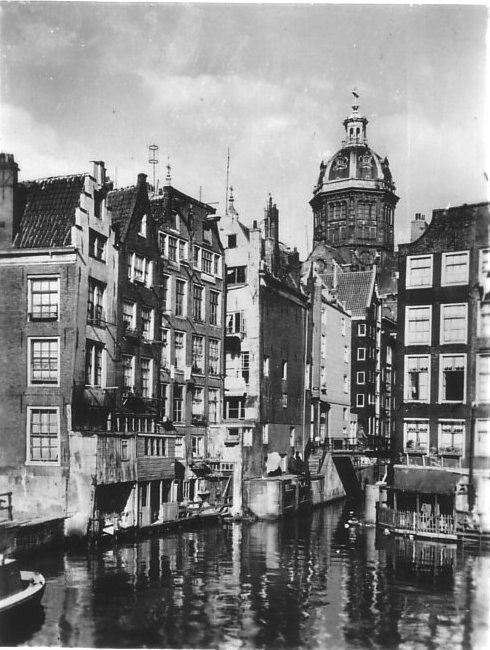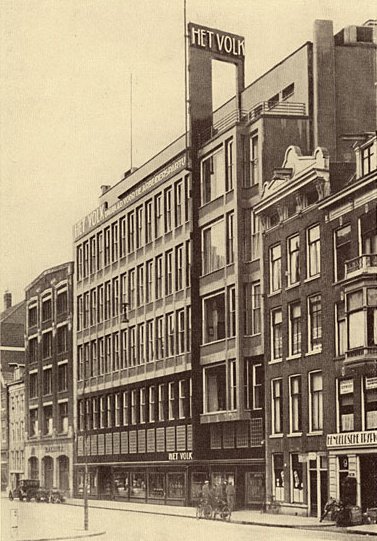

 Wikipedia Sitemap |
|
|  Useful Links 1 Useful Links 2 |
The 1930's were a very important time in my life, actually, the most important ten years in everybody's life, I believe. However, I felt adult life for me dcame not until the Second World War had come to an end in 1945 when I took stock of myself.
At the age of ten, one was still full of fun with not a care in the world. I did realize there was a lot of trouble, because people were talking about a crisis and a malaise. I did not have a clue what that meant, but I realized it had something to do with the collapse of the stock market in America. It was all Greek to me.
A sure fact, however, was many people had no work, and no work meant no food. Personally, it did not affect our family much because Papa had his steady job of hauling milk cans from the farmers to the dairy.
Our oldest sister, Annie, landed a job in the city. She was going to be a house maid of the Sol family who had a shoe store in the front of their house. They were living in the Krommestraat (Crooked Street), a side road off the Longstreet. They had several children, some of them our age.
After our parents decided they were compatible, it was arranged that once a year during our school holidays, which was the whole month of August, we could visit each other.
First, they came to Hamersveld and we had a ball. It was so much fun to see how they behaved themselves. We, of course, heard of city people but never expected them to be so different. They were wearing leather shoes every day, even in the mud. I thought the houses in the city must have dirty floors, because those kids did not take their shoes off before they came in the house.
Another thing that struck us was they talked funny. I heard about that before: the people were called "Stads" or "Deftig" which meant something like "city slicker" or "stuck up". It was much later that I found out that it was not them who talked funny but it was us who pronounced the words differently. Maybe they thought we were talking funny.
They also were very quiet kids. They would talk and laugh but never scream at the top of their lungs which was normal for us.
It was also fun to watch their reaction when they came close to our cow. The cow would come close to sniff these strangers but no way would they let her. They ran away. It did not matter that I told them there was nothing to be scared of - cows didn't eat people. They were also scared of our horse and swine. But overall, we did have lots of fun.
Our return visit to their house was toward the end of August. It was so different from what I had visualized. The big city, man, what a place. The houses were all built onto each other. It seemed to me they did that so they would not fall over in a strong wind - because they were so tall and skinny and very old too.
All the streets were paved with brick, no mud roads at all and no mud puddles. Now I understood why they didn't have to wear (klompen) wooden shoes. Then there were great big buses: MINERVA it said on the radiator. They were awfully noisy: they banged and clanked, worse than Jan the blacksmith when he was forging horse shoes. To me, the bus seemed to be a big monster who liked to eat people, because while I was watching, it swallowed many. The people must not taste too good because just a little down the street, it spat them all out again.
The family we stayed with had a little open space behind the house. But to get there we had to take our klompen off and carry them with us through the store and the house. At the end of it was a wrought iron gate. On the other side of the gate was a "Gracht" - originally a moat around the city. Hundreds of years ago, it was built for protection, but was also used for transportation because it was connected to the river "Eem".
Those city folks must be rich because there were light bulbs in every room of the house, and for cooking, they had gas. What a convenience: just turn a knob and away you go. At home, to cook something, you have to go to the woodshed, get some dried up twigs if they were not in the kitchen yet, stick it in the fire pot, find an old newspaper, tear it up, push it under the twigs, then light a match and hope it catches. Then you have to get bigger pieces of firewood to keep it going. My, oh my, people in this here city got it made.
And that was not all, they got what they called radios. Nice wooden boxes with knobs on the front, all you had to do was to turn some and after awhile music came out, much to our delight. At the village, several people had gramophones, but you had to crank them up before they would make music.
In the city, it was all so modernistic. In all my life, I hadn't seen so many people. They were everywhere, especially on the Longstreet where the ground floor was all stores and shops. And the vehicular traffic was eye bulging. At home, when one heard an automobile, you would run out to have a look, but here there was no time for that - the streets were full of bicycles: transport bikes, (bak fietsen) box bikes, that is, three wheelers with a box between the two front wheels, some even had an engine to propel it forward, bikes with big baskets over the front wheel, wooden wheeled pushcarts, some with one or two dogs hitched in front to help move the loads, and of course horse and wagons. But that was nothing new to us.
All too soon, we had to leave this new glorious world and our new found friends, but we promised to be back next year, and learn more about the wonders of a modern day city.
Related resources:
 |
 |
| Amsterdam in the 1930s | Gebouw Arbeiderspers, Amsterdam |
Amsterdam in the 1930s from Wikimedia.